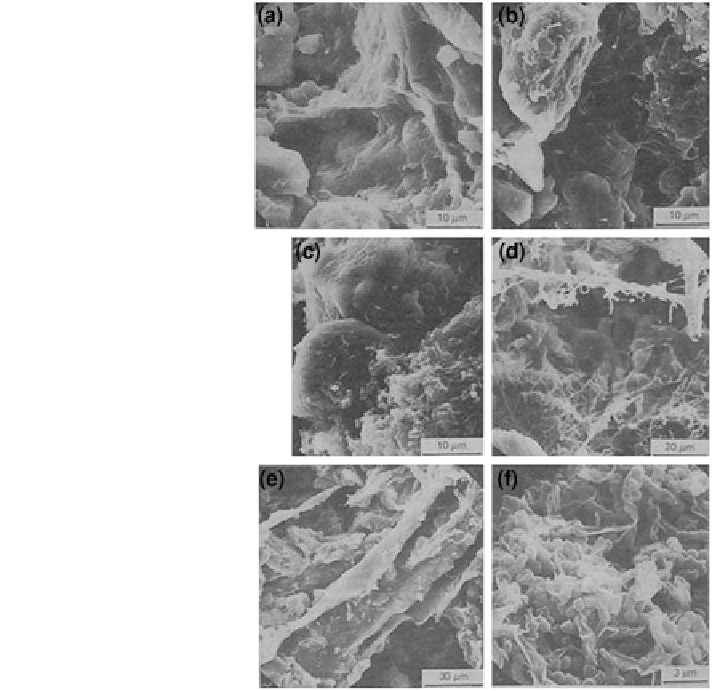Geoscience Reference
In-Depth Information
Fig. 18.39 SEM
micrographs representative of
internal structure of water-
stable aggregates, in a a silt
loam soil (control); and
showing presence of bacteria,
actinomycetes, and fungi in
b-f a silt loam sludge (5 %)
mixture after 16 days of
incubation at 25 C (Metzger
and Yaron
1987
)
polysaccharides, and the physical entanglement of primary particles in the fungal
hyphae (Fig.
18.39
). It was also observed that polysaccharides, as a byproduct of
soil microbial activity, exhibit a positive correlation to WSA stability over time
(e.g., Cheshire et al.
1984
). Moreover, sludge water-soluble components were
found to contribute to binding of well-defined soil constituents such as kaolinite or
montmorillonite (Metzger and Robert
1985
).
Soil aggregate stability following application of urban compost of different
maturities is presented in Fig.
18.40
, where effects of environmental factors such
as mechanical breakdown or fast and slow wetting were considered by Annabi
et al. (
2007
). These authors found that after addition of compost, the enhanced
microbial activity improved aggregate stability mainly by increasing water
repellency. The observed increase in interparticle cohesion was attributed to the
inward diffusion of binding organic substances within the aggregates. The effect of
microbial colonies growing on soil solid surfaces and forming polymer bridges
that bind soil mineral particles was confirmed in a series of studies (Kimbursky
et al.
1989
; Chenu and Guerif
1991
; Chenu
1993
; Chenu and Tessier
1995
). More

